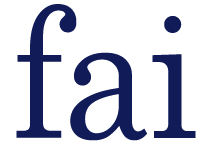Self-funded groups are an increasingly common way of delivering microfinance services. In India, for example, self-help groups increased their membership dramatically in Andhra Pradesh after the microfinance crisis of 2009-2010. In Africa, several international NGOs are promoting village savings and loans associations (VSLAs) as member-driven, local institutions. . . .
Can these groups “replace” traditional microfinance, in the sense that they do not need the intervention of loan officers or professional managers? An interesting paper contributes to answering this question . . . . . .
Read MoreTake-up of formal microinsurance products remain low around the world, typically ranging from 0 to 30-40 percent depending on the type of product and the conditions of the offer. A growing literature is testing various determinants of take-up, although little has been done to step back and consider what we have learned as a whole. . . .
That’s a problem because the issues are complicated and multi-layered. There’s a high probability of being misled by any particular finding from the research when designing new products. . . .
Michal Matul, Aparna Dalal, Ombeline De Bock and Wouter Gelade have done a huge service to the sector, then, in a new paper presented at the Third European Research Conference on Microfinance, held June 10-12 in Norway. Their paper is a must-read for anybody interested in microinsurance, particularly in understanding and overcoming the puzzle of low take-up for both first sales and renewals of purchases. The latter has been little considered, yet renewal rates tend to be even lower than first-sale rates . . . . . .
Read MoreThe literature on microinsurance is growing. A series of studies have been published in recent years that look at determinants of (generally low) take-up of microinsurance products, particularly index insurance products. Some work is also being done looking at the impact of offering insurance to farmers. . . .
At the Third European conference on microfinance, held June 10-12 in Norway, Mark Rosenzweig shared some interesting results on the take-up of rainfall microinsurance in India, and its impact on risk-taking. He particularly addresses two important determinants of take-up and impact that have so far received limited attention: basis risk (that is, the risk for a client that the insurance may not pay out when he or she experiences an actual loss due to the possible difference in rainfall at the weather station and on his or her plot), and the complementarity of formal microinsurance with informal insurance mechanisms . . . . . .
Read MorePoor households in developing countries face large and varied risks. Many agriculture-dependent households, for example, are at risk of drought- or flood-induced crop failures or livestock deaths. The death of a family member often implies having to fund expensive burial ceremonies, and if the deceased was the household’s primary earner, replacing her/his stream of income is an even bigger problem. A short “Client Math” survey by the Microinsurance Learning and Knowledge (MILK) project of Compartamos borrowers in Mexico, for instance, shows that funeral costs alone (including the costs of the funeral itself as well as connected costs such as food and drink, but excluding lost wages) typically amount to half of a family’s annual income (my calculations from data described in Poulton and Magnoni 2012). Similar figures have been reported from around the world. . . .
Poor families have imperfect tools to manage these risks. They rely on self-insurance, traditional risk-sharing arrangements, informal insurance networks, and/or credit and savings. These strategies, however, are inflexible and/or expensive, and do not provide enough protection . . . . . .
Read MoreLast week, Innovations for Poverty Action’s SME Initiative brought together researchers and practitioners to discuss recent research on SMEs (Small and Medium Enterprises), mostly in the developing world. . . .
Why the growing interest in SMEs? Partly it’s a reaction to the murky results on the impacts of microfinance. Evidence is increasingly suggesting that microenterprises do not tend to grow much and their impacts on income and consumption are up for debate. Against that, supporting SMEs may be a more effective way to provide jobs and reduce poverty. . . .
Given that, what struck me most about the conference is not what was discussed, but what was not discussed. Many big-picture questions that underlie the focus on SMEs were not explicitly raised . . . . . .
Read MoreA previous post introduced projects that focus on ultra-poor households, in Bangladesh and India. The post ended with a promise to share the results of the impact evaluation of the project implemented by SKS in Andhra Pradesh, India. The results I share here are preliminary. Additional data and finer analyses are on the way, but I wanted to deliver on that promise. . . .
In a nutshell, the Targeting the Ultra-Poor (TUP) projects being implemented around the world are an attempt to reach destitute households, who are often too poor to participate in microfinance, and help them create a sustainable livelihood based on a modest economic activity. Participants receive food, free health care, training, savings help, and assets (a cow, a few goats, working capital to start a small business) over a period of 18 to 24 months. The programs are not microfinance programs, both because of the population that they target and the activities that they include. Their main goal is to attack ultra-poverty holistically, although they also aim to help successful participants take advantage of microfinance . . . . . .
Read MoreIn a previously posted video, FAI’s Jonathan Morduch talks about providing the “ultra poor” – people who live on $1.25 a day or less – with financial services. . . .
As Jonathan said, BRAC’s program, Challenging the Frontiers of Poverty Reduction – Targeting the Ultra-Poor (CFPR-TUP), has been a trailblazer in reaching extremely poor households. At the same time, the question of the program’s impact must be taken up more rigorously. BRAC has made valuable efforts to measure the impact of this program, and published several working papers providing insights into whether and how CFPR-TUP works. A new working paper came out in June 2010, investigating the long-term impacts of the program with panel data. . . .
These evaluations, however, did not rely on a randomized controlled trial methodology (RCT). . . . . .
Read Moren a previous post, I wrote about my visit to SafeSave in Dhaka. SafeSave also has a cousin organization, called Shohoz Shonchoy (“Easy Savings,” in Bangla), that operates in rural Bangladesh. Shohoz Shonchoy employs the same flexible methodology as SafeSave, with collectors visiting clients every day to allow clients to make financial transactions from their homes or workplaces. Shohoz Shonchoy has been providing a fascinating product since 2007. Product 9 (P9) incorporates many new insights into poor people’s ways of managing their financial lives, and makes it easy for them to save . . . . . .
Read MoreLast week I had the pleasure to visit SafeSave, an unconventional microfinance institution operating in Dhaka, Bangladesh. SafeSave was founded by Stuart Rutherford (among other things, author of The Poor and Their Money and co-author ofPortfolios of the Poor) and puts a very interesting twist on the traditional model of credit-led microfinance institutions. (To see Stuart Rutherford discussing SafeSave, seeVideo IV, at the 5:30 mark.) . . .
SafeSave provides financial services to very poor clients without relying on group meetings, joint liability, guarantors, or even fixed weekly loan repayments. It was set up as an experiment, to learn whether a flexible, non-group lending methodology would be sustainable. In practice, a lot of the common microfinance wisdom is challenged, and it works: the repayment rate, for example, stands at 95 percent. This is just one statistic. More importantly, I think SafeSave’s methodology is a great way of serving clients with a flexible and convenient system that matches their needs in a unique way. . . .
At the heart of SafeSave’s methodology are the 66 collectors, who visit clients at their homes or workplaces every day and provide them with an opportunity to make savings deposits or withdrawals, and repay their loans (clients need to go to the branch for loan disbursement and large savings withdrawals). All collectors are women who come from the same neighborhoods that SafeSave serves. To match clients’ irregular income flows, savings and loan repayments are optional, and clients choose how much they want to save or repay on a given day. Loans therefore do not have a definite term . . . . . .
Read MoreWelcome back to the world of econometrics debates! I hope you enjoyed the first installment. Round 2 pits Heckman and Urzúa against Imbens, and is about instrumental variables and estimates the local average treatment effect (LATE). . . .
First, a little bit of background about instrumental variables... . . .
Read MoreSo far, 2009 has been a fertile time for methodological debates in econometrics. One hot debate touches directly on randomized control trials (RCTs), a methodology often used in impact evaluations of development interventions. On one side, renowned Princeton development economist Angus Deaton argues that randomized experiments are overhyped and that other methods of learning about impacts provide guidance which is often more closely related to theory. On the other side, Guido Imbens reminds readers of the reasons why randomized experiments have gained a wide following. Other methods rely on assumptions that often make them not quite fully convincing. . . .
Read More


